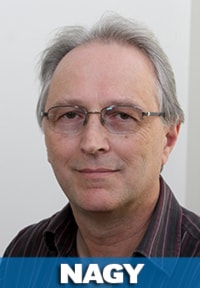Journalism is a profession that once depended on lead to help spread the news of communities, countries and people’s lives.
The facts, details of countless events, big and routine — and in the early days, written down with lead pencils — became stories typed out on paper.
The stories were then turned into lead type. Nowadays, the lead processes that were used to produce printed media are largely gone.
Reporters were only likely to see the lead of newspapering if they passed through the old composing rooms of newspapers.
As we have seen in recent days, journalists are now lucky if they don’t have to dodge lead bullets while covering the deadly conflicts around the world.
We in the profession hope it’s not a case of what goes around comes around.
We’re supposed to be out there reporting on the news, not making it.
A former colleague of mine from decades ago — Kathy Gannon — was shot twice while in Afghanistan a few days ago. She survived but the photographer working with her (Anja Niedringhaus, 48, of Germany) did not.
Just weeks after Canada officially ended its mission in the country, as Afghanistan prepared for elections, Gannon was out doing her job — on her way to cover a story.
For reasons not clear — or perhaps no reason — her car was attacked by a lone gunman who, after spraying the journalists’ car with gunfire, quickly surrendered.
We all wonder why this senseless incident occurred.
Was it out of frustration or hatred?
The gunman is an Afghan police official.
In war, one may expect to be shot at by the enemy. So what was this? The latest case of friendly-fire?
Seeing a social media posting about a Canadian reporter being wounded late last week, I clicked on the link to read the story. We don’t forget the people we work with over the years.
As the story did not mention where Gannon had worked, I immediately thought our former employer — the Prince Albert Daily Herald in Saskatchewan — would be interested to know.
It’s one of those times when the newspapering instincts kicked in. A quick call proved correct.
“Wow!” was the reaction from the current editor of the newspaper where I’d worked with Gannon in the 1970s when told of her history there.
Within hours, the PA Herald posted a story about the shooting on its website.
Later, the Herald followed up with reaction from our editor at the time, who still works in northern Saskatchewan.
The story was later picked up by the nearest big paper, the Saskatoon StarPhoenix, where another of our former co-workers continues to work to this day.
I hadn’t seen or spoken to my former boss since 1990 so another call was placed to Saskatchewan.
Pleasantly surprised to hear from me, he related how he’d been receiving calls from other former co-workers from our time in Prince Albert.
I explained that I had told the Herald about Gannon’s PA connection, hence their call to him for his response.
“If there’s a ray of light in this (shooting) it got us talking to one another again,” my former editor told me.
Most of us had never heard from each other in decades — until a few bullets all but shattered our journalistic world.
But like the many disasters, tragedies and triumphs we report on — and the people who are wounded and otherwise affected — we too were suddenly drawn together after time and across distance for strength and support.
Gannon served as the Associated Press’s Afghanistan bureau chief for several years and is now a special correspondent in the region. She has spent more than 20 years reporting from the Middle East and has written the book I is for Infidel: From Holy War to Holy Terror: 18 Years Inside Afghanistan.
Perhaps she will add another chapter to her book, offering up an all too personal account of the horror of terrorist behaviour.
David Nagy is an Advocate editor.
